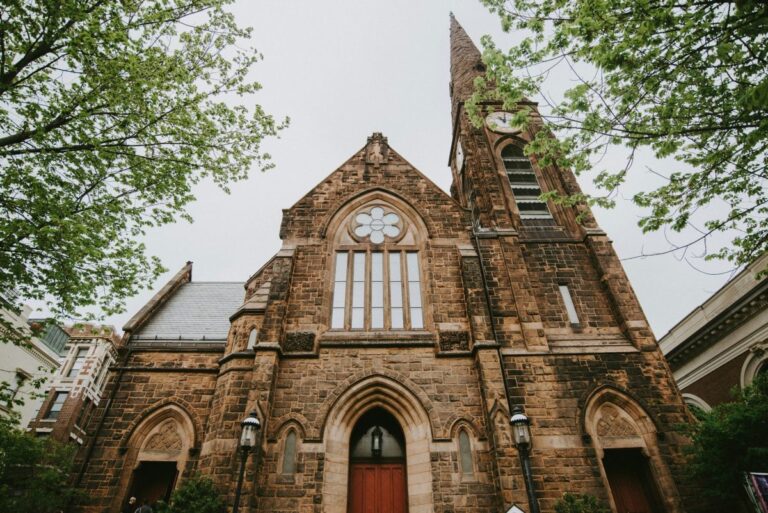Saint Hedwig 12thC Bavarian
Saint Hedwig of Silesia was born in 1174 and died on October 15, 1243. She was a member of the Bavarian comital House of Andechs, was Duchess of Silesia from 1201 and of Greater Poland from 1231, as well as High Duchess consort of Poland from 1232 until 1238. Saint Hedwig of Silesia was canonized by the Catholic Church in 1267 by Pope Clement IV. Among other things, Saint Hedwig of Silesia was a widow. He husband, Hernry, died in 1238, and she moved into an Abbey. That seems like an extreme reaction to being widowed. Would you consider doing such a thing?
Saint Hedwig of Silesia Biography

The daughter of Count Berthold IV of Andechs, margrave of Carniola and Istria, and his second wife Agnes of Wettin, Saint Hedwig was born at Andechs Castle in Bavaria. Her older sister, Agnes, married King Philip II of France (annulled in 1200), and her sister Gertrude (killed in 1213) married King Andrew II of Hungary, while the youngest sister, Matilda, became abbess at the Benedictine Abbey of Kitzingen in Franconia, where Hedwig also received her education. Hedwig’s brother was Bishop Ekbert of Bamberg, Count of Andechs-Meranien. Another brother was Berthold, Archbishop of Kalocsa and Patriarch of Aquileia, while her brother Henry, Margrave of Istria, was the first lord of Carniola. So, she had an accomplished family.
When she was 12, Saint Hedwig married Henry I the Bearded, son and heir of the Piast duke Boleslaus the Tall of Silesia. As soon as Henry succeeded his father in 1201, he had to struggle with his Piast relatives. He had many conflicts, and his life was threatened repeatedly. In 1229, Henry was captured and arrested at Płock Castle. Saint Hedrig pleaded for his life and prayed fervently. Her actions promoted the reign of her husband: upon the death of the Polish High Duke Władysław III Spindleshanks in 1231, Henry also became Duke of Greater Poland and the next year prevailed as High Duke at Kraków.
Henry died in 1238 and was buried at a Cistercian monastery of nuns, Trzebnica Abbey (Kloster Trebnitz), which he had established in 1202 at Hedwig’s request. Hedwig accepted the death of her beloved husband with faith. Saint Hedwig said, “Would you oppose the will of God? Our lives are His.” The widow moved into the monastery, which was led by her daughter Gertrude.
Saint Hedwig had seven children; they were: Agnes (1190 – May 11, 1214), Bolesław (1191 – September 10, 1206/08), Henry II the Pious (1196 – killed in Battle of Legnica, April 9, 1241), Konrad the Curly (1198 – September 4, 1213), Sophie (1200 – March 22/23 1214), Gertrude (1200 December 6/30 1268), Abbess of Trebnitz, Władysław (December, 25 1208 – 1214).
Saint Hedwig of Silesia: Veneration

Saint Hedwig was canonized in 1267 by Pope Clement IV, a supporter of the Cistercian order, at the suggestion of her grandson, Prince-Archbishop Władysław of Salzburg. She is the patron saint of Silesia, of Andechs, and of the Catholic Archdiocese of Wrocław and the Roman Catholic Diocese of Görlitz. Legend has it that Hedwig, while on a pilgrimage to Rome, stopped at Bad Zell in Austria, where she had healing waters spring up at a source which today still bears her name.
In 1773, the Prussian king Frederick the Great conquered and annexed most of Silesia in the First Silesian War, and had Saint Hedwig in Berlin built for the Catholic Upper Silesian immigrants. Since 1930, the cathedral of the Roman Catholic Archdiocese of Berlin has been. After the expulsion of almost all Germans from Silesia, German Silesians carried Hedwig’s veneration all over the remaining Germany. In March 2020, the discovery of Hedwig’s remains, which had been missing for centuries, was reported. The remains were found in her sanctuary in Trzebnica, in a silver casket bearing a lead tablet with an inscription confirming Hedwig’s identity. Hedwig glasses are named after Hedwig of Silesia.
Conclusion
Saint Hedwig is most likely not a Saint you have heard about, but her moving to an Abbey after she became a widow is both extreme and exemplary. She was from an accomplished family, with several siblings holding important noble positions. Her example of fervent prayer not only saved her husband, but is an example to us this day.







